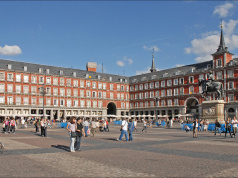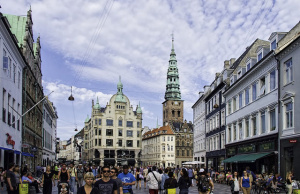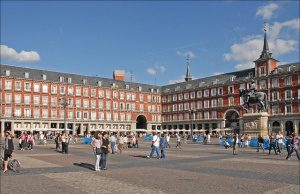Perhaps known just as well for his whimsical, sometimes outrageous personality, as he is for his stunning surrealist work, Salvador Dalí is one of the most intriguing figures of the last century.
Born in Figueres, in the Catalan region of northern Spain in 1904, Dalí found his artistic talents from an early age. He attending drawing school and in 1916, while spending a summer vacation with the family of Ramon Pichot, a local artist, Dalí first discovered impressionism. The following year, Dalí’s father, a middle-class lawyer and notary, organized an exhibition of his charcoal drawings in the family home.
In 1922, he moved to Madrid and studied at the Real Acadamia de Bellas Artes de San Fernando. During this time, he became close friends with others that would become prominent figures in Spain’s art and culture scene such as Pepín Bello, Luis Buñuel, and Federico García Lorca.
In 1926, Dalí was expelled from the school for causing unrest and moved the same year to Paris, where he was first introduced to Picasso, an already famous artist whom he greatly admired. From there, you can see that Picasso as well as Joan Miró influenced his work.
In 1929, Dalí’s life would change forever, when he met his future wife, muse and lifetime companion, Gala. Though she was married with a child at the time, their connection was unbreakable. From that point on, they never left each other’s side.
In 1931, in a beach house he and Gala had bought together, Dalí painted one of his most famous works, The Persistence of Memory, currently at the MOMA in New York City. From then on, Dalí grew increasingly better known, spending time in the U.S. and Spain. He was friends with many celebrities and known for his outlandish behavior, such as bringing his pet Ocelot around with him or leaving a drawing on the bill instead of paying his restaurant tab, because he was sure they wouldn’t want to throw out such a valuable piece of artwork.
Though he spent time living all throughout the world, Dalí maintained a strong connection to his hometown, Figueres. Today, the Dalí Theatre-Museum is located in the building that was the town’s theater when he was child. It was burned down in the Spanish Civil War and remained in that state for many years.
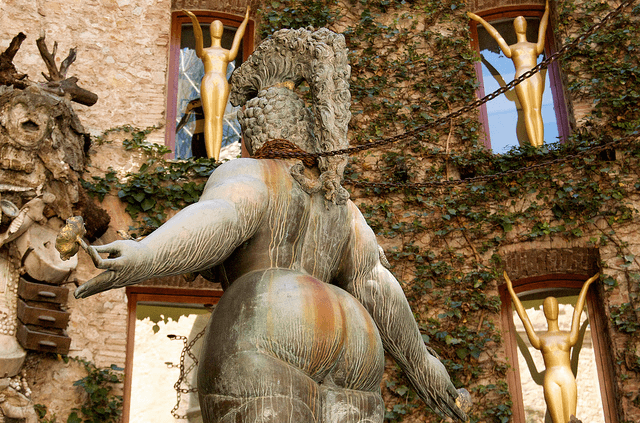
In 1960, Dalí and the mayor of Figures decided to rebuild the run down theatre into a museum, dedicating it to Dalí. It holds the single largest and most diverse collection of his art worldwide, much of which is from his personal collection. There are also many other mediums such as sculptures, collages, and perhaps things that can’t necessarily be categorized except that they came from the depths of Dalí’s fascinating mind.
One of the most popular spots of the theatre-museum is the 3-D installation made from custom furniture that looks like Mae West from a certain spot in the room.
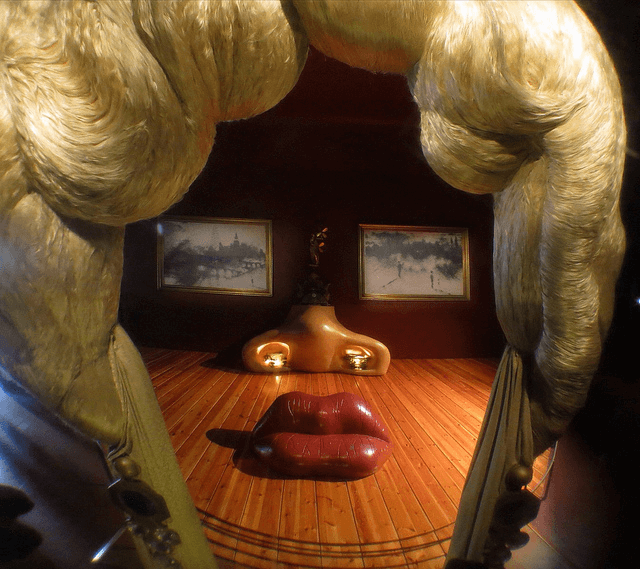
Having gone there myself, I can truly say it is an experience that cannot be put into words. Dalí was a master of mystery, evoking an almost discomfort of strangeness for his viewers that reached beyond reality and into another realm of thinking. Perhaps that is why is he so well revered; he made us think about things from an uncomfortable point of view.
Upon discussing his hopes for the theatre-museum, Dalí remarked:
“I want my museum to be a single block, a labyrinth, a great surrealist object. It will be totally theatrical museum. The people who come to see it will leave with the sensation of having had a theatrical dream.”
From Barcelona, it takes a few hours to reach Figueres, then about a 15-20 minute walk to reach the museum. There are also other attractions to see, but you can imagine that the majority of the focus is on Dalí. There were very long lines to enter (we waited over an hour) and the museum is large, but with many different small rooms, so they can get easily crowded. I would definitely recommend to go outside of the tourist season (summer) to try and beat the crowds.You can also book the tickets online, which cost 12€ for one adult.
Also, don’t forget to check out the Dalí Jewels section of the museum, which is a separate entrance. With our ticket to the main museum we could also enter this section for free.
Other than that, there’s not much to say other than the Dalí Theatre-Museum is truly an experience you don’t want to miss.
Featured image courtesy of
[Wikipedia], [Dalí Museum]





